- La Garde Ecossaise Historical Fiction and Early Modern Studies
- Posts
- La Garde Ecossaise Historical Fiction and Early Modern Studies Newsletter
La Garde Ecossaise Historical Fiction and Early Modern Studies Newsletter
No 17. Early Modern Public Libraries: England, Scotland, Ireland, France, Spain and Germany.
Welcome
A warm welcome to the La Garde Ecossaise Historical Fiction newsletter – this is your fortnightly update on the novel series and early modern studies.
Latest Releases from La Garde Ecossaise
Audio Guide Chapter 22 Further Notice to the Reader.
Audio Guide Chapter 23 [13] La Bibliothèque Mazarine.
Podcasts available on Spotify, Apple Podcasts and YouTube.
Quote
‘The fact that so few were aware of Orange’s plots and willing assassins in France is testimony to the hard work and success of John Hamilton and La Garde Ecossaise’.
La Garde Ecossaise Book 1 p.110.

A Soldier on Duty, from "The French Guards" (Les Gardes Françaises). Abraham Bosse. 17th century. MET MUSEUM
Early Modern Digest
16th century pirates and the origins of the Mojito. https://www.timesnownews.com/lifestyle/food/from-16th-century-pirates-to-ernest-hemingway-the-untold-history-of-mojito-and-how-it-conquered-the-world-article-152862929
16th century restored oatmeal house in Angus, Scotland https://www.thetimes.com/uk/scotland/article/visit-a-rare-water-powered-mill-the-centre-of-16th-century-life-nhf2jkl22
How a 16th century Portuguese epic poem influenced early colonial rule in India https://homegrown.co.in/homegrown-voices/os-lusadas-how-a-portuguese-epic-poem-helped-glorify-colonial-rule-in-india
17th century Dutch Dolls Houses https://www.houseandgarden.co.uk/article/17th-century-dutch-dolls-houses-history
Remains of Polish royal residence looted by the Swedes in the 17th century found in river https://notesfrompoland.com/2025/09/13/remains-of-polish-royal-residence-looted-by-swedes-in-17th-recovered-from-river/
Did you know?
The lute is still played by musicians today. Jan Akkerman the legendary guitarist from the 60s/70s band Focus is a world-renowned lute player. You can listen to Jan Akkerman playing the lute here:
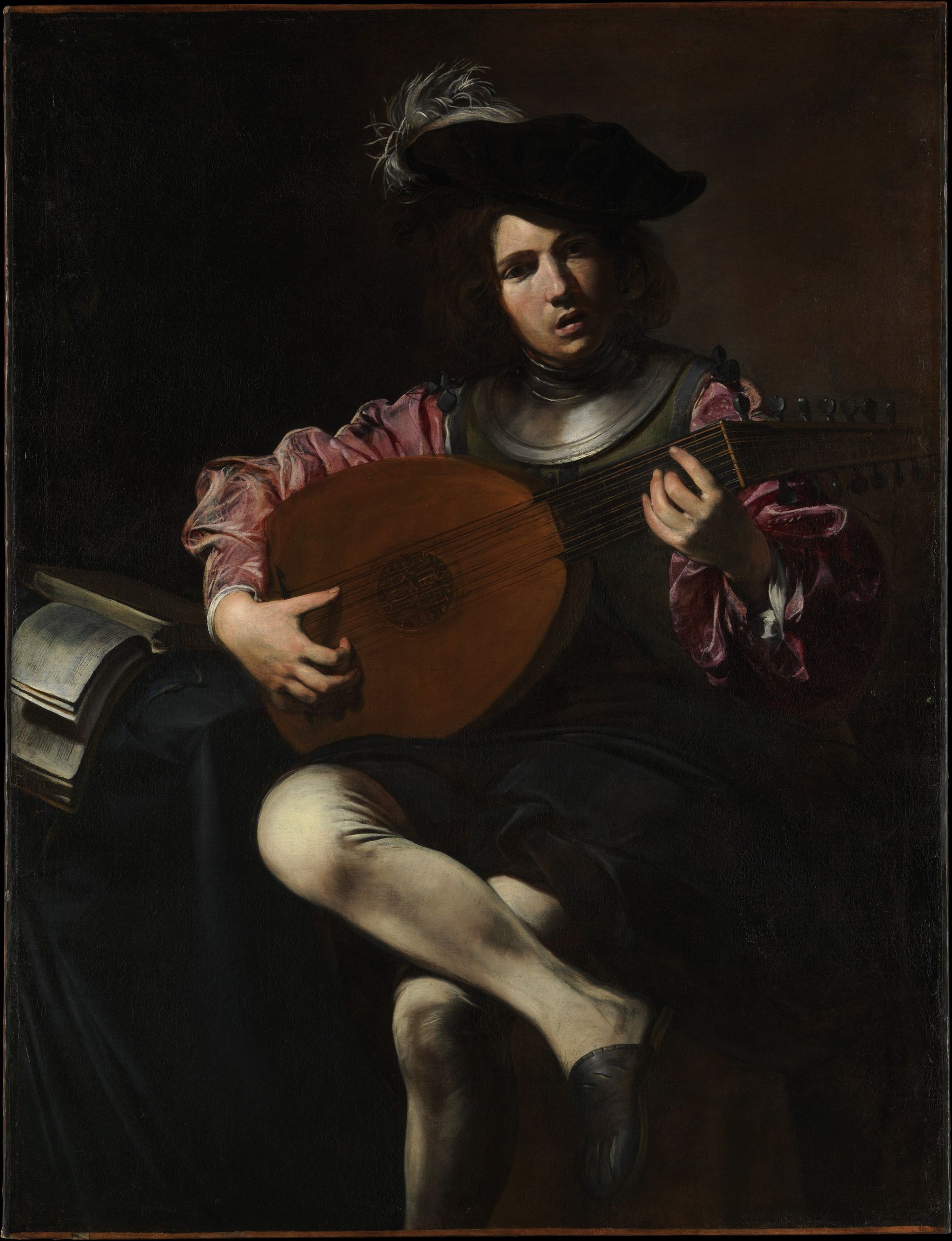
Valentin de Boulogne, CC0, via Wikimedia Commons. MET MUSEUM.
Feature Article Early Modern Public Libraries: England, Scotland, Ireland, France, Spain and Germany.
In La Garde Ecossaise Robert Meldrum is taken on his first mission to La Bibliothèque Mazarine in Paris which was a public library that existed in the seventeenth century and is still used today.[1]
This article will highlight some early modern libraries you can visit, not just as a researcher but as a tourist, as many of these libraries are part of the cultural fabric of their cities.
I will provide links to digital collections and/or information about major collections of early modern manuscripts and printed works in these libraries.
I cannot mention every significant early modern public library in Europe and I have limited the discussion to the countries discussed in book 1 namely, England, Scotland, Ireland, France, Spain and Germany.
As you will see, during the early modern period public libraries began to be established. These libraries allowed ordinary members of the public to access books and manuscripts.
We will revisit this topic and explore more early modern libraries in future newsletters as the La Garde Ecossaise series moves forward.
England
Bodleian Library, Oxford.
Founded in 1602 by Sir Thomas Bodley for use by the University of Oxford and the public, it is one of the most celebrated early modern libraries in the world and is still in its original building. You can get a real sense of the early modern university and early modern libraries by being within its walls as many original features still exist. Duke Humfrey’s library is a particular favourite of mine where I conducted research for my PhD. It is where scholars come to consult the university’s manuscript collections.
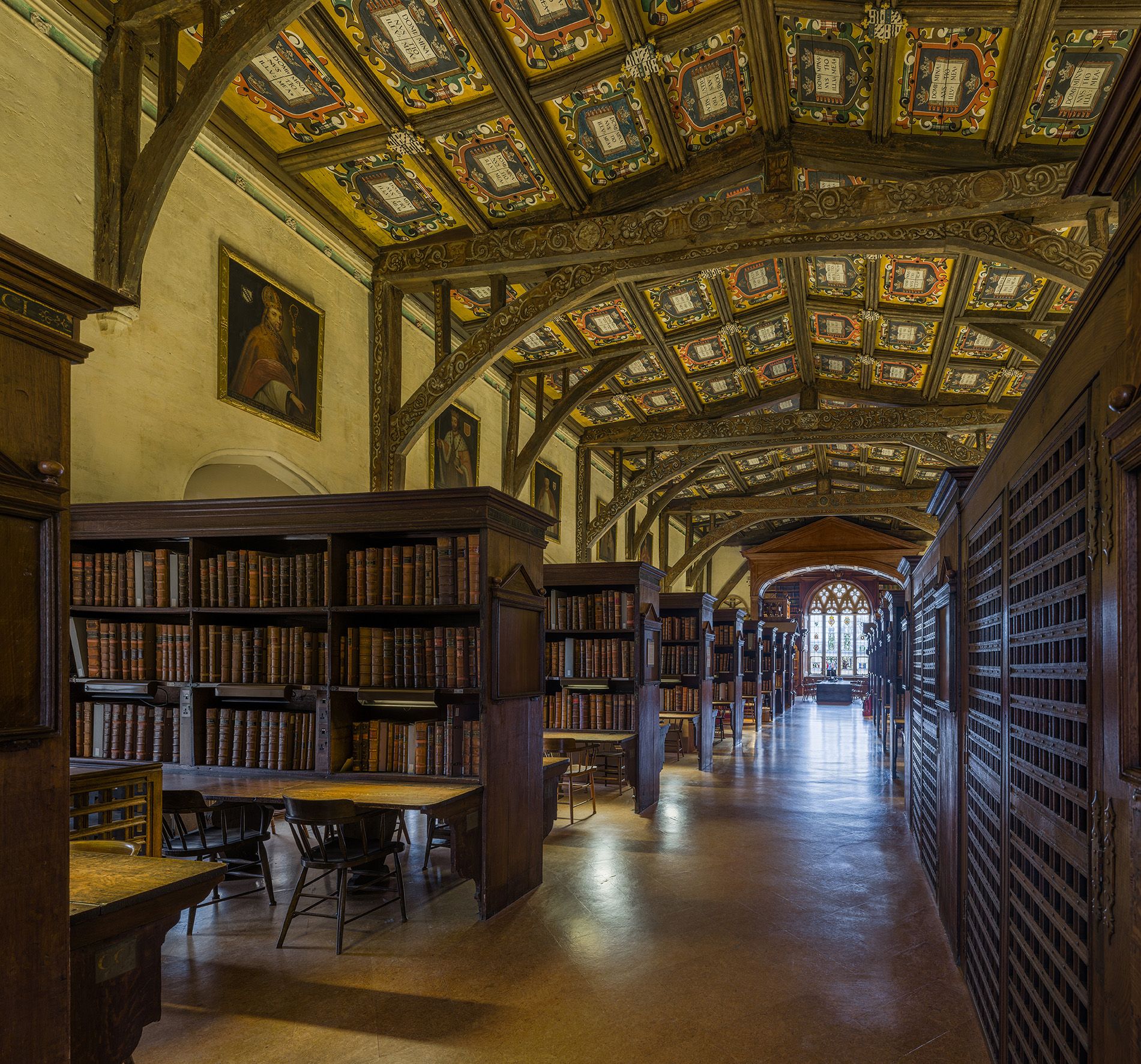
Duke Humfrey’s Library, Bodleian Library, University of Oxford. Diliff, CC BY-SA 3.0 https://creativecommons.org/licenses/by-sa/3.0, via Wikimedia Commons
However, the library is not just only open to scholars and students but there are also tours for the public.
For early modern scholars the Bodleian Library is a treasure trove of manuscripts and is one of the most renowned research repositories of early modern manuscripts in the world.
Collection Highlights: Rawlinson Collection (Thurloe State Papers), Carte Collection (Manuscripts relating to early modern Irish history) and extensive rare book collections including the personal library of the philosopher John Locke.[2]
You can find digitised early modern manuscripts here: https://digital.bodleian.ox.ac.uk/collections/early-modern-manuscripts-and-archives/
Chetham’s Library, Manchester
The oldest public library in Britain and in the English-speaking world dating from 1653. It began adding to its initial collections in 1655 and has an extensive collection of manuscripts and rare books. The library is also housed in its original building which dates from 1421. It has many original features which would have been familiar to early modern contemporaries.
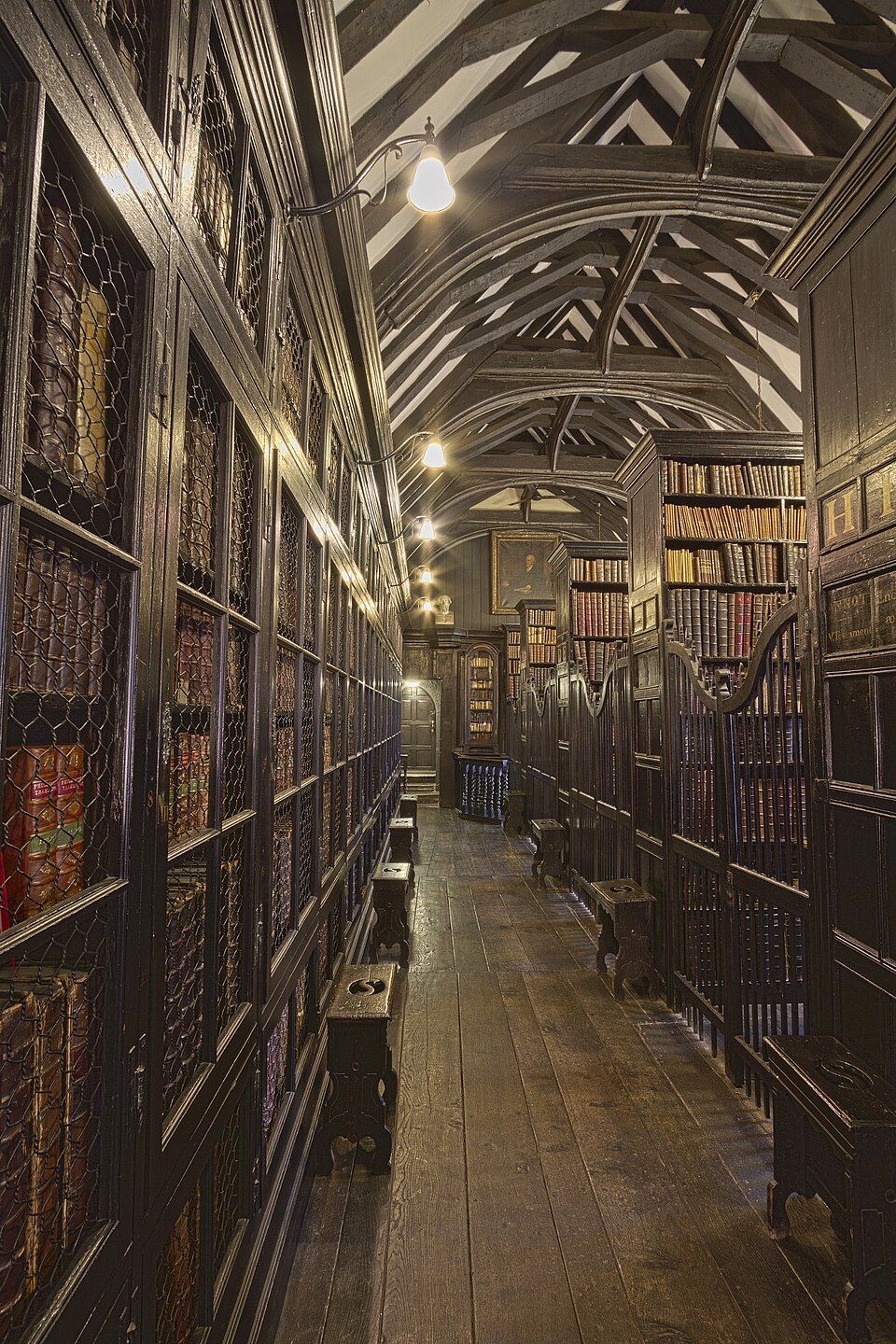
Chetham’s Library Michael D Beckwith, CC0, via Wikimedia Commons.
The library offers a tour and is an accredited museum.
Collection Highlights: Byrom Collection, Haliwell-Phillpps Collection, Shorthand Collection, Tracts.[3]
You can explore their digitised manuscripts here: https://library.chethams.com/collections/digital-resources/
Scotland
Innerpeffray Library, Crieff
Scotland’s oldest lending library dating from late seventeenth century. Founded by David Drummond, Lord Madertie as a bequest in his will so that local people could borrow books from his library free of charge. You can visit the library as a tourist or as a scholar.[4]
Collection Highlights: Large collection of 17th century printed works, many on religious subjects.
Although there are no digital resources, there is an interesting blog written by the library team about books in the collection and Innerpeffray’s connections with Scottish history. https://innerpeffraylibrary.co.uk/blog/
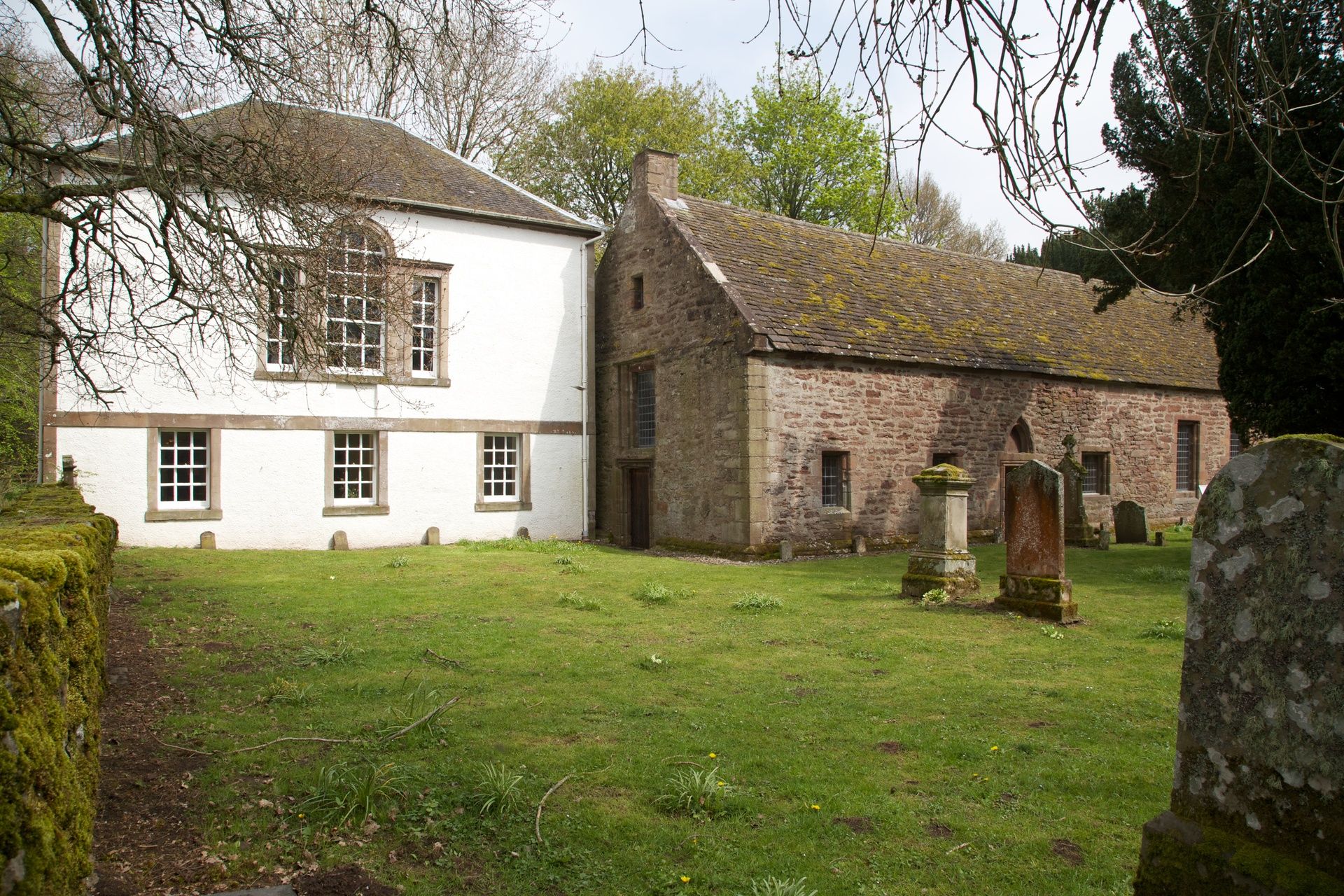
Tom Parnell, CC BY-SA 4.0 https://creativecommons.org/licenses/by-sa/4.0, via Wikimedia Commons.
Republic of Ireland
Marsh’s Library, Dublin
The first public library in Ireland and founded by Archbishop Narcissus Marsh in the early eighteenth century. It can be used by scholars and also be visited by tourists.
Collection Highlights: c.300 manuscripts from the library of Archbishop Narcissus Marsh (1638-1713), Collection of letters in French to Elie Bouhereau, seventeenth-century French Huguenot refugee, seventeenth-century music manuscripts.[5]
You can access the virtual exhibitions here: https://web.marshlibrary.ie/digi/exhibits
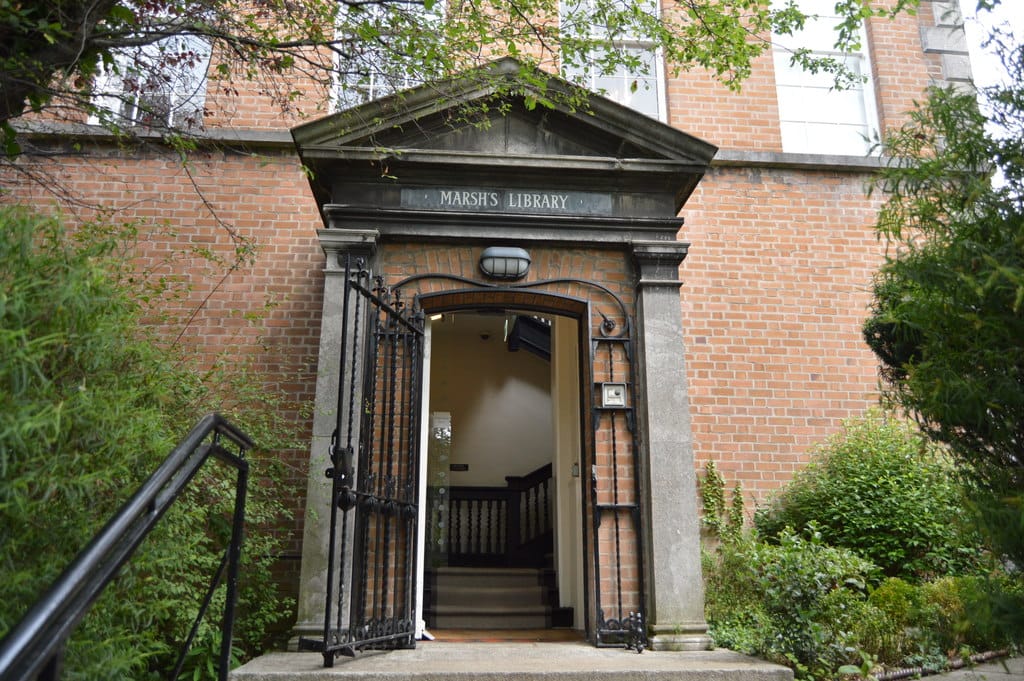
Entrance, Marsh's Library by N Chadwick, CC BY-SA 2.0 https://creativecommons.org/licenses/by-sa/2.0, via Wikimedia Commons.
France
Bibliothèque Mazarine, Paris
The library featured in La Garde Ecossaise Book 1 (Chapter 13). France’s first public library and open for the use of scholars in 1643 in the hôtel particulier de Mazarin (Large mansion house belonging to the aristocracy). It is one of the founding libraries of the La Bibliothèque Nationale in France. [6]
You can virtually visit and tour the library here: https://www.bibliotheque-mazarine.fr/fr/connaitre-la-bibliotheque-mazarine/visite-virtuelle
Collection Highlights: Manuscripts from the Royal Library dating from 1668, Mazarin’s book library including 30,000 volumes of printed and manuscript books collected until his death in 1661, 200 material and artistic objects dating from the seventeenth and eighteenth centuries that survived the French Revolution.[7]
Consult digital collections here: https://mazarinum.bibliotheque-mazarine.fr/expositions-virtuelles

The Reading Room. Remi Mathis & Marie-Lan Nguyen, CC BY-SA 3.0 https://creativecommons.org/licenses/by-sa/3.0, via Wikimedia Commons.
Spain
The Royal Library of San Lorenzo de Escorial
The first public library in Spain founded by King Philip II in the sixteenth century. It is an impressive example of how humanism (See La Garde Ecossaise Newsletter No 4.) spread across Europe.[8]
Collection Highlights: Over 7000 pieces of art and objects from the sixteenth century, an extensive collection of rare books in Latin, Castilian, Hebrew and Greek.[9]
A virtual collection (of sorts) can be found under the title ‘database’.
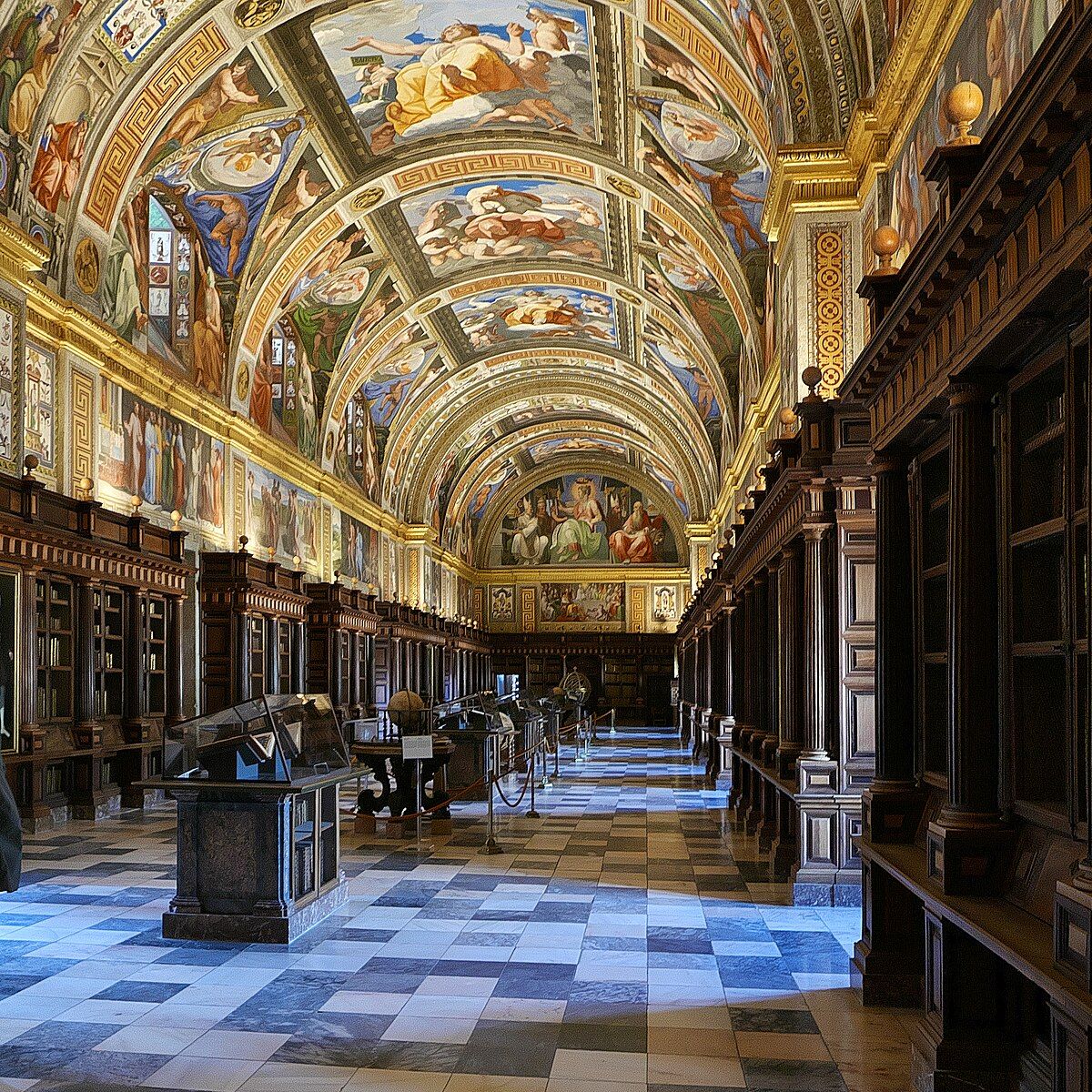
Jl FilpoC, CC BY-SA 4.0 https://creativecommons.org/licenses/by-sa/4.0, via Wikimedia Commons
Germany
Herzog August Bibliothek, Wolfenbüttel
The oldest public library in Germany dating back to 1572 that is still open today and a leading international centre on the cultural history of the middle ages and early modern Europe.[10]
Collection Highlights: The Helmstedt manuscripts from the sixteenth century, The Gudian manuscripts of classical Latin and Greek literature, rare books owned by Duke Augustus, the Younger (1579-1666), fine arts and graphics from the fifteenth century. [11]
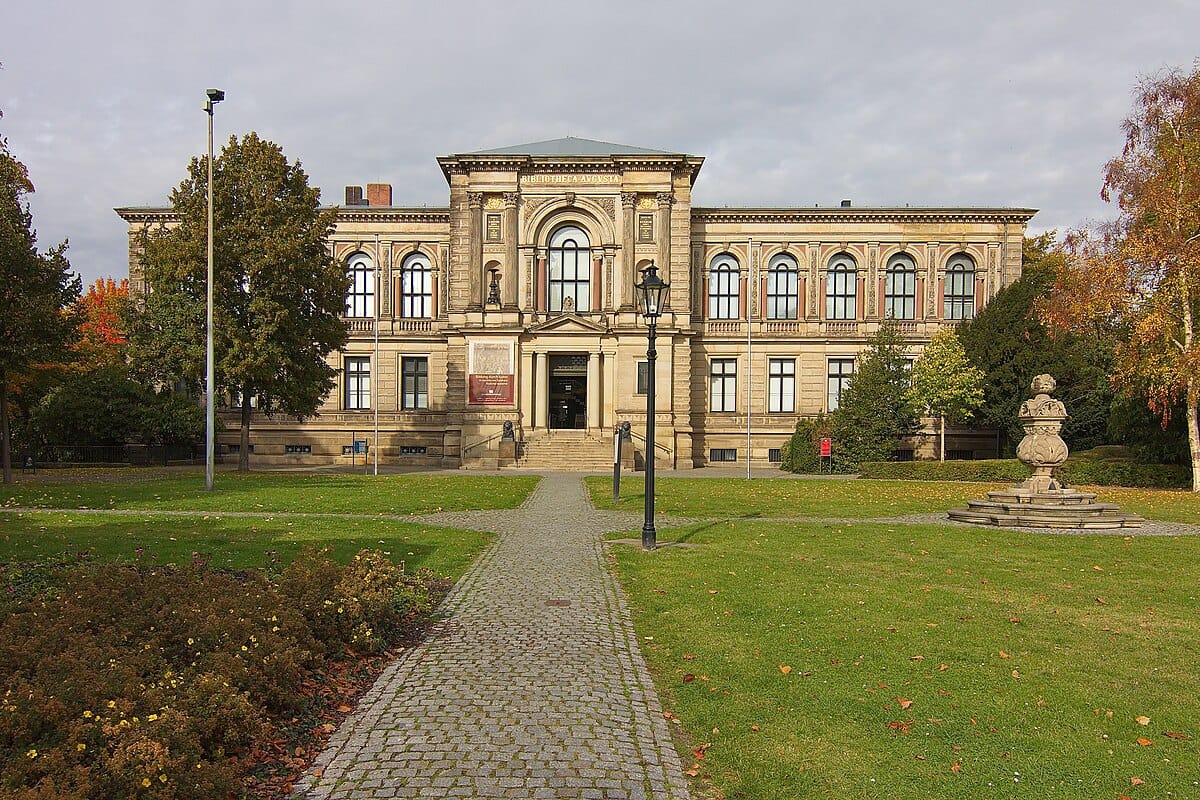
Losch, CC BY-SA 3.0 https://creativecommons.org/licenses/by-sa/3.0, via Wikimedia Commons.
The library has virtual reading rooms and catalogues for their collections:
Manuscripts https://diglib.hab.de/?db=mss
Fine Arts and Graphics. http://www.virtuelles-kupferstichkabinett.de/de/search/
I hope you have enjoyed the latest edition of the newsletter. If you are reading this newsletter on the web and have any questions please leave a comment below or you can email me at [email protected]

[1] Kirsteen M MacKenzie, La Garde Ecossaise : the life of John Hamilton c.1620-1689 (Aberdeen, 2022) 111-117; Bibliotheque Mazarine https://www.bibliotheque-mazarine.fr/fr/ accessed 25/09/2025.
[2] For guidance on the Bodleian’s Manuscript Collections see Janet Foster and Julia Sheppard, British Archives: A guide to archive resources in the United Kingdom (London, 2002) 552 For guidance on the Bodleian’s rare book collections see K Attar ed., Directory of Rare Book and Special Collections in the United Kingdom and Republic of Ireland (London, 2016) 314-331.
[3] Attar, A Directory of Rare Book and Special Collections 280-281.
[4] Innerpeffray Library, https://innerpeffraylibrary.co.uk/our-story/ accessed 25/09/2025; https://innerpeffraylibrary.co.uk/visit-us/ accessed 25/09/2025.
[5] Seamus Helferty and Raymond Refussé, Directory of Irish Archives (Dublin, 1999) 94-95.
[6] La Bibliothèque Mazarine ‘Histoire’ https://www.bibliotheque-mazarine.fr/fr/connaitre-la-bibliotheque-mazarine/histoire accessed 25/09/2025.
[7] La Bibliothèque Mazarine ‘Manuscrits’ https://www.bibliotheque-mazarine.fr/fr/collections/manuscrits accessed 25/09/2025. La Bibliotheque Mazarine ‘Imprimès’ https://www.bibliotheque-mazarine.fr/fr/collections/imprimes accessed 25/09/2025; La Bibliotheque Mazarine, ‘Œuvres objects d’art’ https://www.bibliotheque-mazarine.fr/fr/collections/oeuvres-et-objets-d-arts accessed 25/09/2025.
[8] Royal Library of the Monastery of El Escorial https://www.patrimonionacional.es/en/coleccion/real-biblioteca-del-monasterio-de-el-escorial accessed 25/09/2025.
[9] Royal Library of the Monastery of El Escorial https://www.patrimonionacional.es/en/coleccion/real-biblioteca-del-monasterio-de-el-escorial accessed 25/09/2025.
[10] Herzog August Library ‘Home’ https://www.hab.de accessed 25/09/2025.
[11] Herzog August Library ‘Manuscripts’ https://www.hab.de/handschriften/ accessed 25/09/2025; Herzog August Library ‘Old Prints’ https://www.hab.de/alte-drucke/ accessed 25/09/2025; Herzog August Library, ‘Fine Arts and Prints’ https://www.hab.de/bildende-kunst-und-grafik/
Reply